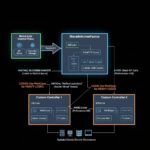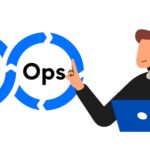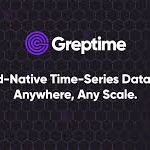
Remember Docker? The revolutionary containerization platform that transformed software development? Solomon Hykes, its creator, is back with a new venture – Dagger. This time, he’s tackling a different challenge: the complexity of CI/CD pipelines.
Why Pipelines Matter (and Why They’re a Mess)
In a recent interview, Hykes dives into the frustrations developers face with inflexible CI/CD (continuous integration and continuous delivery) tools. The problem? Every project is unique, with distinct needs. Cramming them into one-size-fits-all pipelines creates bottlenecks and slows development.
“The reason CI/CD is so hard to solve,” Hykes argues, “is because you can’t solve it once and for all with a well-defined product. Because everyone’s pipeline is different.”
Enter Dagger: CI/CD as Code
Dagger offers a fresh approach: CI/CD as code. Developers write pipelines using code, allowing for modularity and customization. Imagine building blocks for your pipeline – reusable components that represent specific steps like building, testing, and deployment. This empowers developers to create pipelines that truly reflect their workflow, boosting both efficiency and control.
Beyond CI/CD: A Look at Dagger’s Impact
While streamlining development is core, Dagger’s impact extends further:
- Improved Security: By containerizing pipelines, Dagger enhances security. Turning pipelines into code allows developers to adapt to new threats quicker.
- Enhanced Developer Experience: Containerized pipelines are portable, scalable, and secure. This translates to faster development cycles and optimized workflows.
- A Thriving Ecosystem: Dagger fosters a growing community, aiming to create a software ecosystem that tackles a universal challenge for all software teams.
The Intersection of AI and Pipelines
Pipelines extend beyond traditional CI/CD. Hykes discusses how Dagger can improve other pipelines, like those used for AI and data. With AI becoming increasingly integrated into applications, Dagger allows developers to re-engineer AI-enabled pipelines and even integrate Dagger functions with OpenAI’s GPT scripts.
The future of Dagger seems bright, with the potential for an ecosystem of functions readily available for AI agents. This could revolutionize how AI development interacts with pipelines.
Building on Success: Lessons Learned
Hykes emphasizes the importance of building successful open-source projects like Dagger and then creating great commercial products around them. He draws upon his experiences with Docker to shape Dagger’s future.
Stay tuned for more on Dagger and its potential to transform the way we build software!













